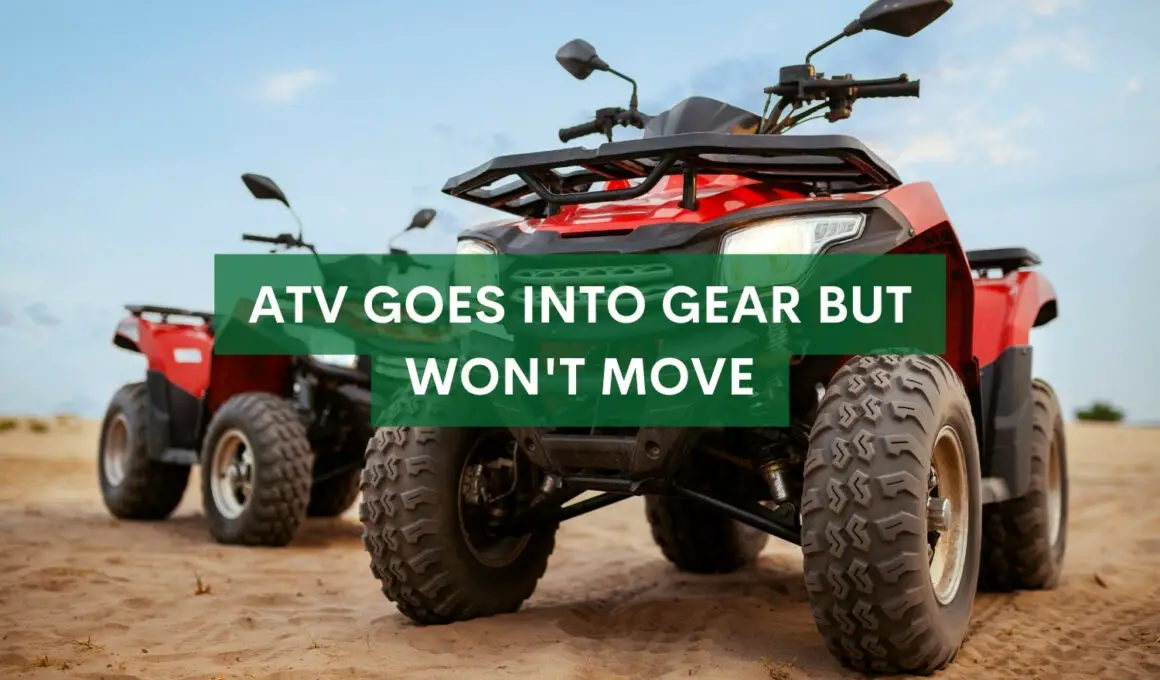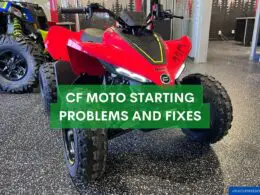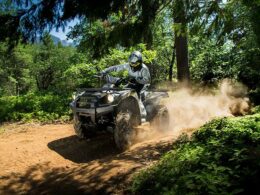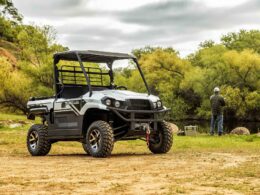In This Article Show
Over my many years as an off-roading expert, I’ve had the pleasure of diving deep into the intricacies of equipment like ATVs and UTVs. Yes, these machines can offer the thrill of a lifetime, but like any other machine, they can be frustrating.
One such predicament that many ATV enthusiasts encounter is when their trusty ride goes into gear but stubbornly refuses to move.
Now, let’s not beat around the bush. We’ve all been there, haven’t we? You’re ready to conquer the outdoors, your ATV roars to life, you shift into gear, and then… nothing. It’s as if the universe is playing a prank on you.
But worry not! With my specialized experience in offroading equipment like ATVs and UTVs, I’m here to guide you through the potential causes and their fixes. Lets dive in.
Understanding the Basic Mechanism
Before we dive into the intricacies of what might be causing your ATV troubles, it’s crucial to have a foundational understanding of the mechanics at play.
After all, with my years of experience specializing in offroading equipment like ATVs and UTVs, I’ve learned that knowing the basics can save you a lot of headaches down the line.

1. The Heartbeat: The Engine
Your ATV’s engine is the heartbeat of the machine, converting fuel into power. While the engine’s primary role is to provide power, it works with other systems to make your ATV move.
2. The Transmission System
Think of this as the brain of your ATV. The transmission controls the power from the engine and directs it to the wheels, allowing your ATV to move at different speeds and in different directions.
3. Clutch Mechanism
Acting as a mediator, the clutch connects and disconnects the engine from the transmission. When engaged, it transfers power from the engine to the wheels. When disengaged, it allows the engine to run without moving the ATV. This is where many issues can arise if things aren’t in sync.
4. Drivetrain and Axles
These are the muscles of your ATV. Once the transmission has regulated power, the drivetrain and axles deliver it to the wheels. If there’s a break in this system, movement becomes impossible.
5. Brake System
As vital as it is to move, it’s equally essential to stop. The brake system ensures you can halt your ATV safely, but if malfunctioning, it might prevent movement entirely.
In Essence 🎏
For your ATV to move smoothly, all these systems need to work in perfect harmony. A hiccup in even one component can throw off the entire symphony, leading to issues like the machine going into gear but refusing to move. By understanding this basic mechanism, you can better diagnose where the problem might be stemming from.
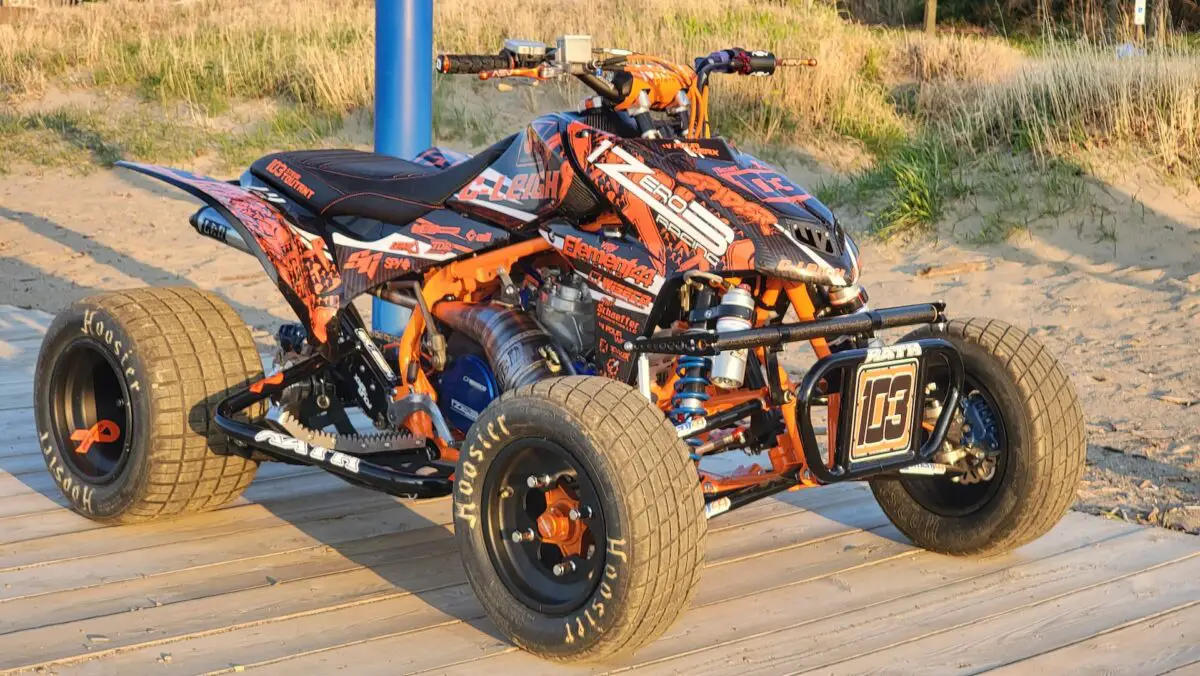
Common Causes When ATV Goes Into Gear But Won’t Move
Navigating the terrains on an ATV is exhilarating, but like any adventure, it can sometimes come with its hiccups. One particularly frustrating hiccup is when the ATV shifts into gear but stands its ground. Here are the most common causes of this issue.
1. Clutch Issues
Worn Out Clutch Plates
Over time, with wear and tear, the clutch plates can get worn out. When this happens, they can’t grip as they should, leading to slippage and preventing movement.
Maladjusted Clutch Cable or Linkage
The clutch needs to engage and disengage at precise moments. If the cable or linkage is out of adjustment, it might not be doing its job right, causing your ATV to stay put.
2. Transmission Troubles
Damaged Gears or Shift Forks
Gears and shift forks are crucial for changing speeds. If they’re damaged, they can’t transfer power effectively, halting movement.
Low or Old Transmission Fluid
Fluids are the lifeblood of your transmission system. If they’re low or have aged, they can’t lubricate and facilitate the movement, causing the ATV to stall.
3. Drivetrain and Axle Problems
Broken or Disconnected Drive Belt/Chain
These components transfer power from the transmission to the wheels. It’s like having a car without a gas pedal if they’re broken or disconnected.
Damaged CV Joints or Axles
CV joints and axles bear a lot of stress, especially in off-road conditions. Damage here means the power won’t get to the wheels as it should.
4. Brake System Issues
Seized or Over-Tightened Brakes
Sometimes, the brakes can seize or become over-tightened, essentially locking your wheels in place, making movement impossible.
5. Electrical and Sensor Failures
Malfunctioning Sensors
Modern ATVs come with sensors that communicate with the engine and transmission. If these malfunction, the ATV might be in gear but receive no signal to move.
Understanding these causes can be a game-changer. It not only helps you in quickly diagnosing the issue but also in ensuring that you take the right measures to address it.
Steps to Diagnose the Problem
When faced with an ATV that’s ready in gear but just won’t budge, it’s essential to approach the situation methodically. Here’s a step-by-step guide to help you zero in on the root cause:
1. Visual Inspection
Begin with a basic external check. Look for any visible signs of wear, damage, or disconnection, especially around the drivetrain, axles, and clutch.
2. Sound Clues
With the engine running, listen closely. Grinding noise could point towards transmission issues, while squealing might hint at a belt problem. These auditory hints can be quite revealing.
3. Fluid Check
Pull out the dipstick and check the transmission fluid’s level and quality. Low levels might indicate a leak, while a burnt smell or murky appearance suggests that it’s time for a change.
4. Brake System Examination
Ensure that your brakes aren’t the unseen culprits. Spin the wheels manually (when the ATV is off and in neutral). You might be dealing with seized or over-tightened brakes if they don’t rotate freely.
5. Electrical System Check
Using a multimeter can be beneficial for those with a bit of technical know-how. Check the electrical continuity of sensors, especially those linked with the transmission. A lack of continuity or erratic readings might indicate faulty sensors or wiring.
6. Clutch Engagement Test
With the ATV off and in neutral, manually operate the clutch lever. You should feel a smooth engagement and disengagement. The clutch mechanism might need adjustments if it’s overly loose or tight.
7. Transmission Engagement Test
Carefully, with the engine running and the ATV safely secured, shift through the gears. You should feel a distinct engagement with each shift. If not, the transmission could be the problem area.
By following these diagnostic steps, you can narrow down the issue and better understand the necessary fixes. Remember, safety first. If you’re ever unsure during these checks, it’s always wise to consult a professional.
Pro Tip 👋
Need to talk to a professional with a special discovery on your car issue? Use this link to talk to a professional. This is in partnership with JustAnswer, which has an on-call expert who can help you, especially during an emergency. Talk to a master mechanic now.
Fixing the Issue: Practical Solutions
Once you’ve diagnosed the underlying problem, it’s time to roll up your sleeves and address it head-on. Here are practical solutions to the common causes we highlighted earlier:
1. Clutch Solutions
Replacing Clutch Plates
If wear and tear have taken their toll on your clutch plates, consider replacing them. New plates can restore the grip and transition of power.
Adjusting Clutch Cable/Linkage
If the clutch isn’t engaging or disengaging properly, a simple adjustment of the cable or linkage can often do the trick. Ensure it’s neither too tight nor too loose.
2. Transmission Solutions
Changing Transmission Fluid
Old or low transmission fluid can be a major roadblock. Drain the old fluid, inspect the transmission for any debris or metal shavings, and then refill with fresh, manufacturer-recommended fluid.
Address Damaged Components
A more in-depth repair or replacement might be needed if gears or shift forks are damaged. This task can be intricate, so seek professional assistance if you’re not confident.
3. Drivetrain Fixes
Reconnecting Drive Belt/Chain
If your drive belt or chain has come off, reinstall it, ensuring it’s properly tensioned. If it’s damaged, replace it with a new one.
Addressing Axle or CV Joint Issues
Damaged CV joints or axles can obstruct movement. Depending on the extent of damage, you might need to repair or replace these components.
4. Brake System Fixes
Releasing Seized Brakes
If your brakes have seized, try releasing them manually. If the issue persists, you may need to replace the brake pads or address any rust causing the seizure.
Adjusting Brake Systems
Over-tightened brakes can be adjusted to allow free movement. Ensure they’re not too loose; safety should always be a priority.
5. Electrical Fixes
Replacing Malfunctioning Sensors
If a sensor is sending erratic signals or no signals at all, it’s time for a replacement. Ensure the replacement is compatible with your ATV model.
Checking Wiring Connections
Loose or corroded connections can be a silent culprit. Inspect the wiring, especially around the transmission and engine, and secure or replace any faulty sections.
Recap 🌟
Taking the time to understand the problem and applying these practical solutions can save you both time and money in the long run. However, if you’re ever in doubt or feel the task is beyond your expertise, there’s no shame in seeking professional help.
ATVs are robust machines, and with the right care, they can provide thrilling adventures for years to come.
Preventative Measures
Proactivity is often the best policy when it comes to maintaining your ATV. By taking a few simple measures, you can minimize the chances of your ATV going into gear without moving. Here’s how to stay ahead of potential issues:
1. Regular Maintenance Checks
Just like any vehicle, your ATV benefits from regular check-ups. Periodically inspect all components, especially the transmission, clutch, and drivetrain, for wear, damage, or misalignment.
2. Fluid Regularity
Ensure all fluids, especially the transmission fluid, are changed at recommended intervals. This keeps the internal components lubricated and functioning optimally.
3. Mind the Clutch
Avoid aggressive clutching, especially from a standstill. Over time, this can wear out the clutch plates and the related mechanism faster.
4. Brake Inspections
Regularly inspect your brakes for signs of wear, rust, or over-tightening. Ensuring they’re in prime condition prevents movement issues and ensures safety.
5. Electrical System Upkeep
Keep the electrical components, including sensors and wiring, clean and free from dirt or moisture. Regularly check for loose connections or signs of corrosion.
6. Proper Storage
When not in use, especially for extended periods, store your ATV in a dry and sheltered location. This reduces the chances of rust, which can seize various components.
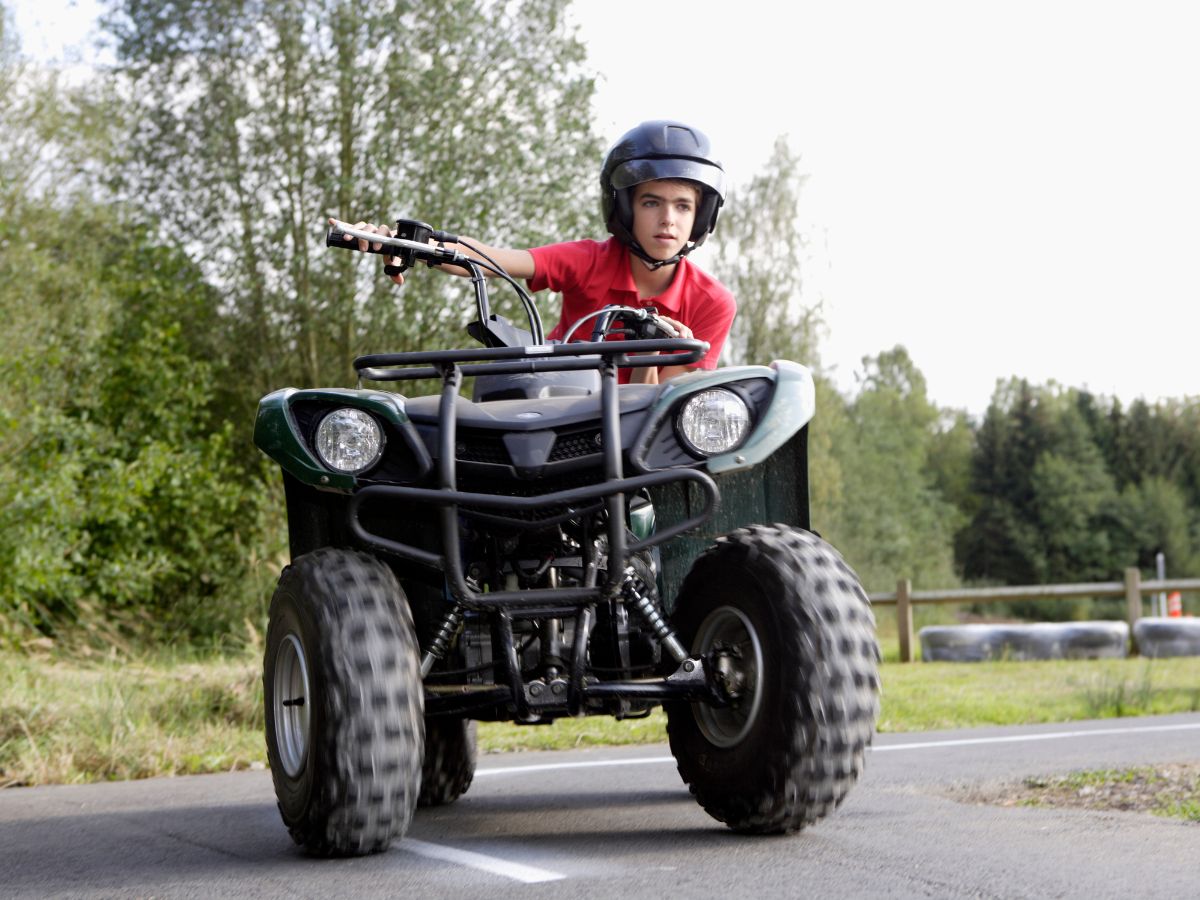
7. Stay Updated with Recalls
Manufacturers occasionally issue recalls for specific parts or models due to discovered defects. Staying updated ensures you replace or repair any potentially problematic components.
8. Avoid Overloading
Respect the weight limits of your ATV. Overloading can put undue stress on various components, leading to premature wear and potential malfunction.
9. Use Quality Parts
If replacements are needed, always opt for quality parts, preferably original equipment manufacturer (OEM) parts. They tend to offer better performance and longevity.
By adhering to these preventative measures, you not only extend the lifespan of your ATV but also ensure that your off-roading adventures remain uninterrupted by unforeseen mechanical hitches.
Wrapping it up
The thrilling experience of riding an ATV across diverse terrains is second to none. However, like all mechanical wonders, ATVs are not immune to occasional hiccups. Finding your ATV in gear but stationary can be a momentary setback, but with the right knowledge, it’s often a solvable problem.
We’ve journeyed through understanding the ATV’s basic mechanics, pinpointed common causes for this particular issue, shared steps to diagnose it, provided practical solutions, and highlighted preventative measures to reduce future occurrences.
While DIY solutions can be both fulfilling and cost-effective, it’s crucial to remember that when in doubt, consulting a professional ensures both the safety and longevity of your beloved off-roading companion.
With consistent care and maintenance, your ATV can deliver countless exhilarating rides, transporting you to places where typical vehicles dare not tread.






